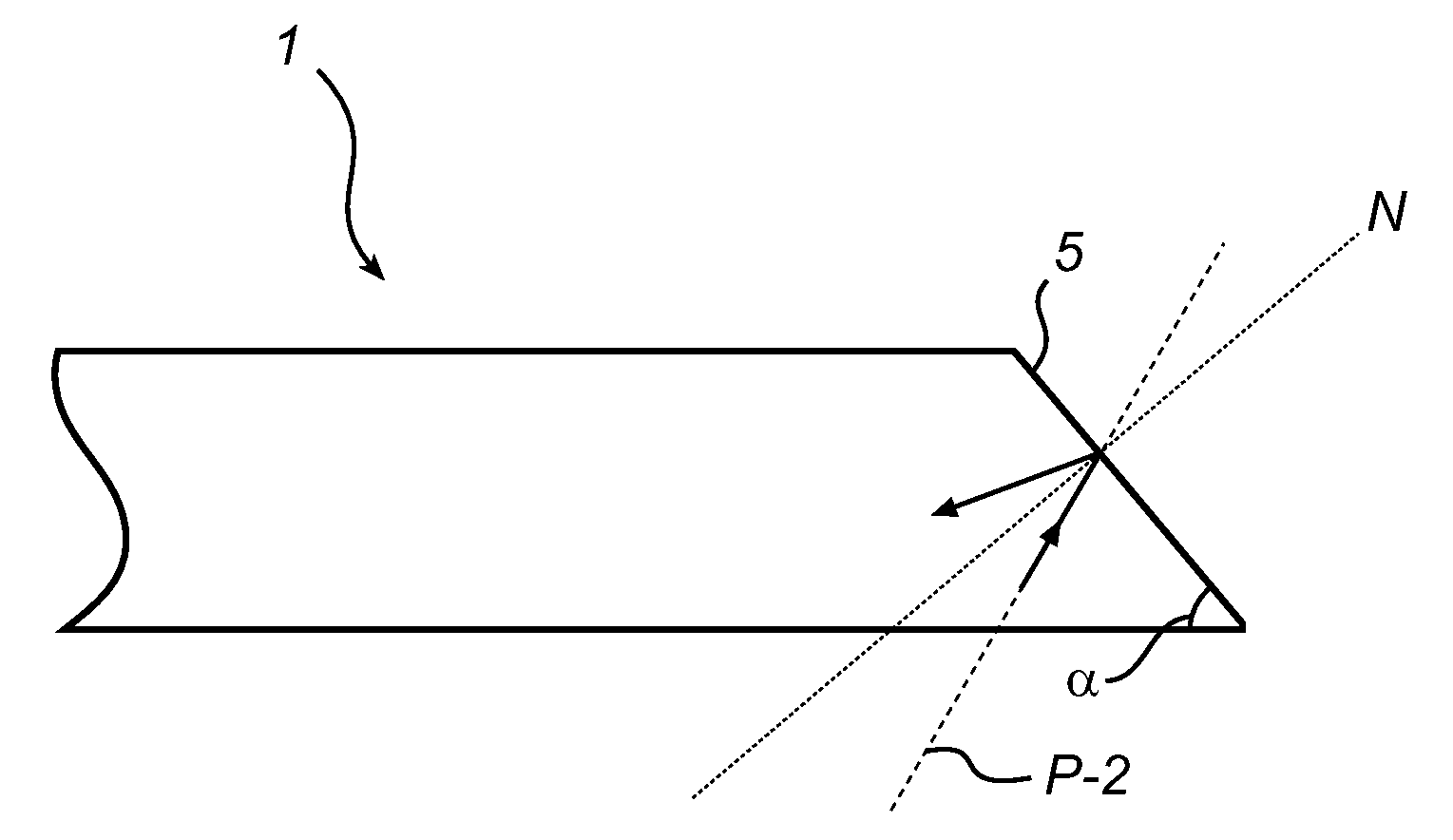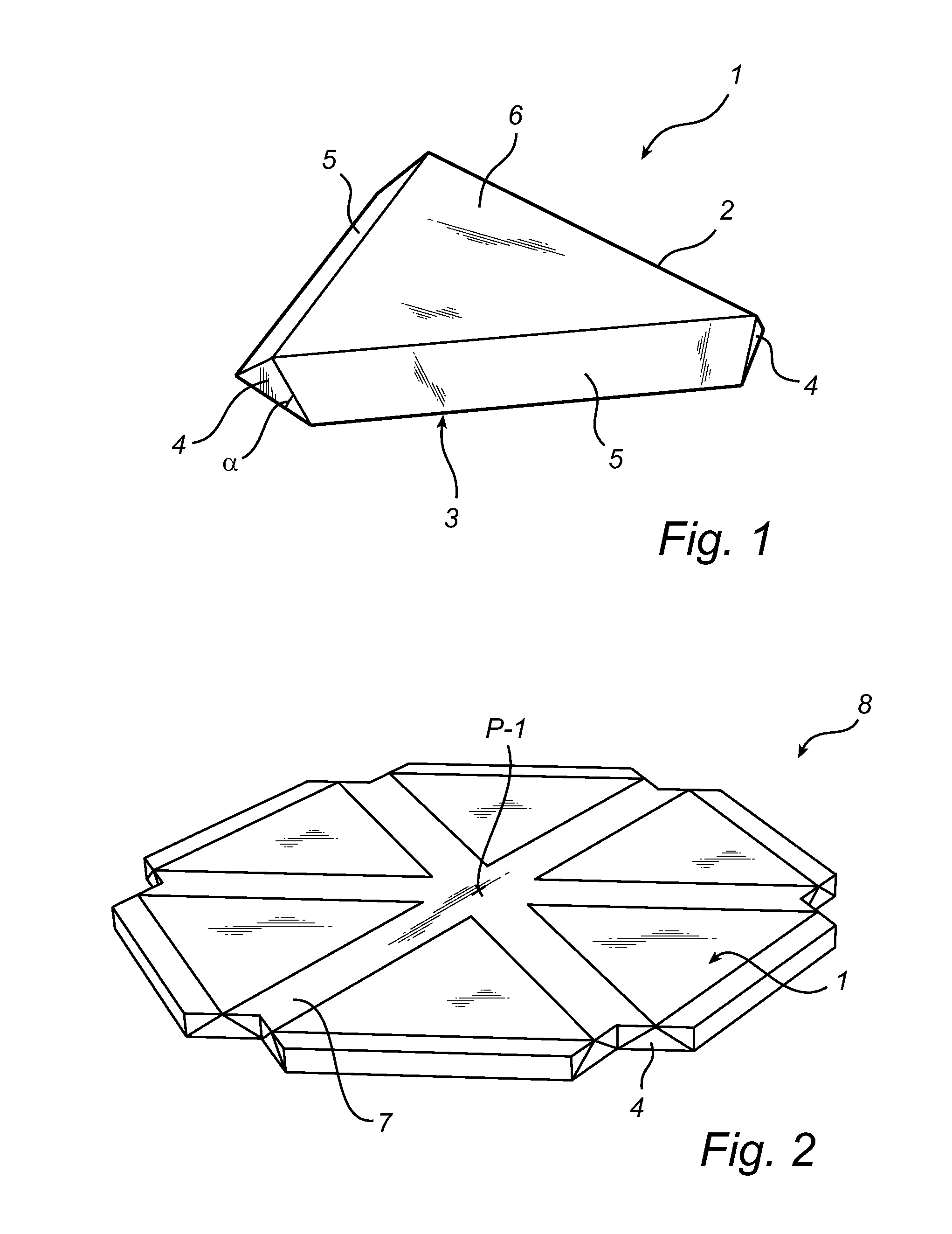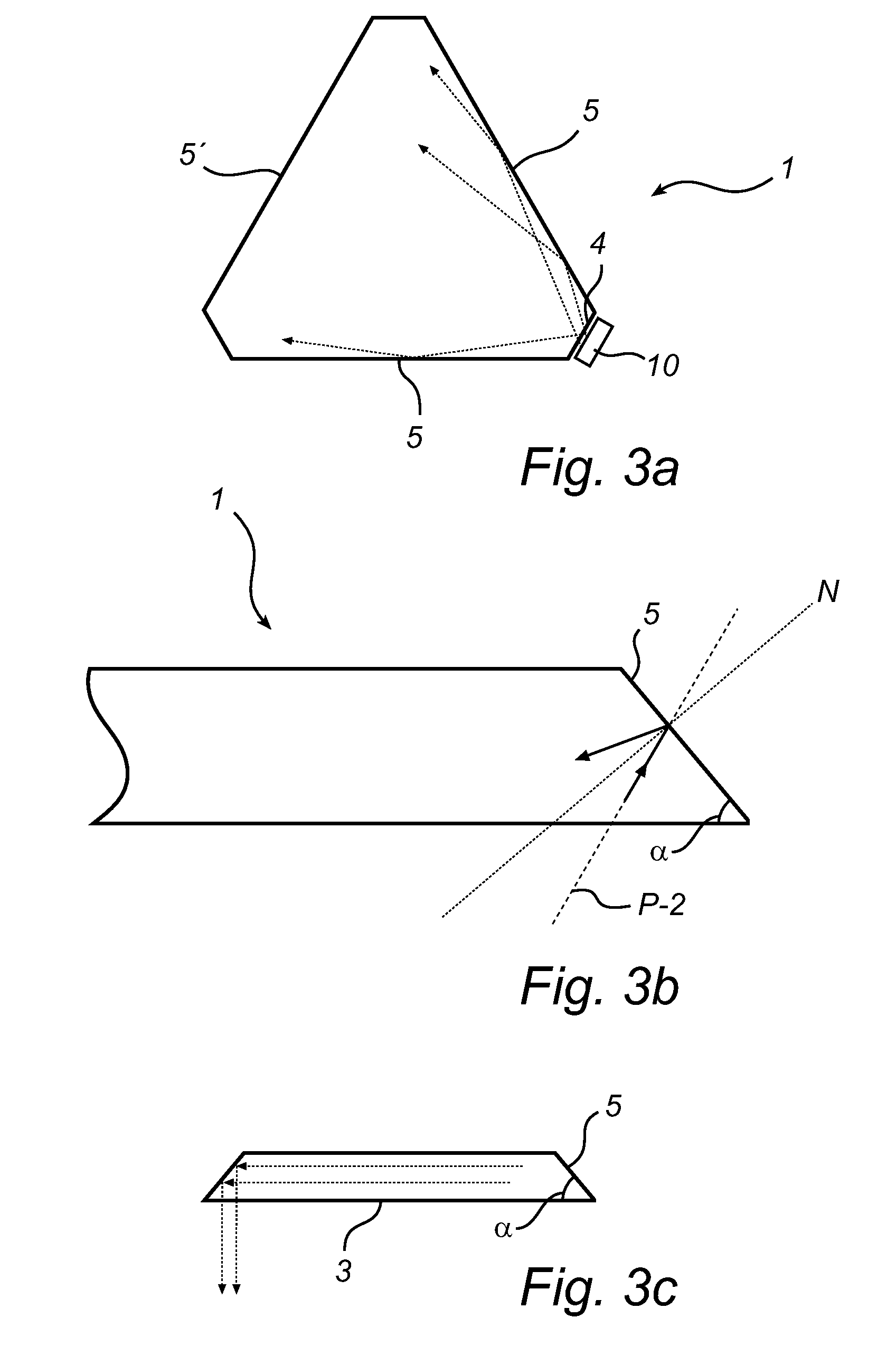Light guide for illumination
a technology of light guide and light guide, which is applied in the field of light guide and luminaire, can solve the problems of unfavorable user experience and lack of appealing presentation, and achieve the effects of less light leakage, less light leakage, and efficient interfa
- Summary
- Abstract
- Description
- Claims
- Application Information
AI Technical Summary
Benefits of technology
Problems solved by technology
Method used
Image
Examples
first embodiment
[0034]With reference to FIG. 1, a light guide 1 is shown. The light guide 1 has the shape of an equilateral triangle 2 and has a planar light emitting surface 3, a planar top surface 6, three light in-coupling corners 4 and three slanting sides 5, each defining a redirecting surface. Each slanting side defines an acute angle α with the light emitting surface 3. The acute angle can for instance be between 30° and 65°. The in-coupling corners 4 are arranged to allow in-coupling of light into the light guide, and are here formed as flat surfaces, i.e. as truncated corners.
[0035]By placing an LED 10 (see FIG. 3a) adjacent a corner 4, light can be in-coupled into the light guide 1. In-coupled light is collimated and redirected in the light guide 1, via the two adjacent slanting sides 5, towards the slanting side 5 opposite the in-coupling corner 4. When the opposite slanting side 5 receives the collimated light it redirects light towards the planar light emitting surface 3. In FIGS. 3a-c...
second embodiment
[0055]FIG. 4 shows the light guide 1 according to the invention. The functioning of the present embodiment of the light guide 1 is the same as described hereabove. However, the in-coupling corners 4 are tapered to improve collimation in the light guide 1.
[0056]As each adjacent slanting side 5 of the equilateral triangle converge to a corner 4, the planar light emitting surface 3 and a planar top surface 6 start to converge towards each other. The top surface 6 and the light emitting surface 3 converge towards each other until intersecting a surface 11 formed between two adjacent slanting sides 5, which surface 11 defines the in-coupling corner 4. A tapered in-coupling corner 4 is hence formed. Thus, when light is in-coupled via the corner 4, there are four inclined collimating surfaces, each providing collimation parallel and transverse with the planar light emitting surface 3.
[0057]FIG. 5 shows a further embodiment of the light guide 1. Generally, the functioning of light guide 1 i...
PUM
 Login to View More
Login to View More Abstract
Description
Claims
Application Information
 Login to View More
Login to View More - R&D
- Intellectual Property
- Life Sciences
- Materials
- Tech Scout
- Unparalleled Data Quality
- Higher Quality Content
- 60% Fewer Hallucinations
Browse by: Latest US Patents, China's latest patents, Technical Efficacy Thesaurus, Application Domain, Technology Topic, Popular Technical Reports.
© 2025 PatSnap. All rights reserved.Legal|Privacy policy|Modern Slavery Act Transparency Statement|Sitemap|About US| Contact US: help@patsnap.com



